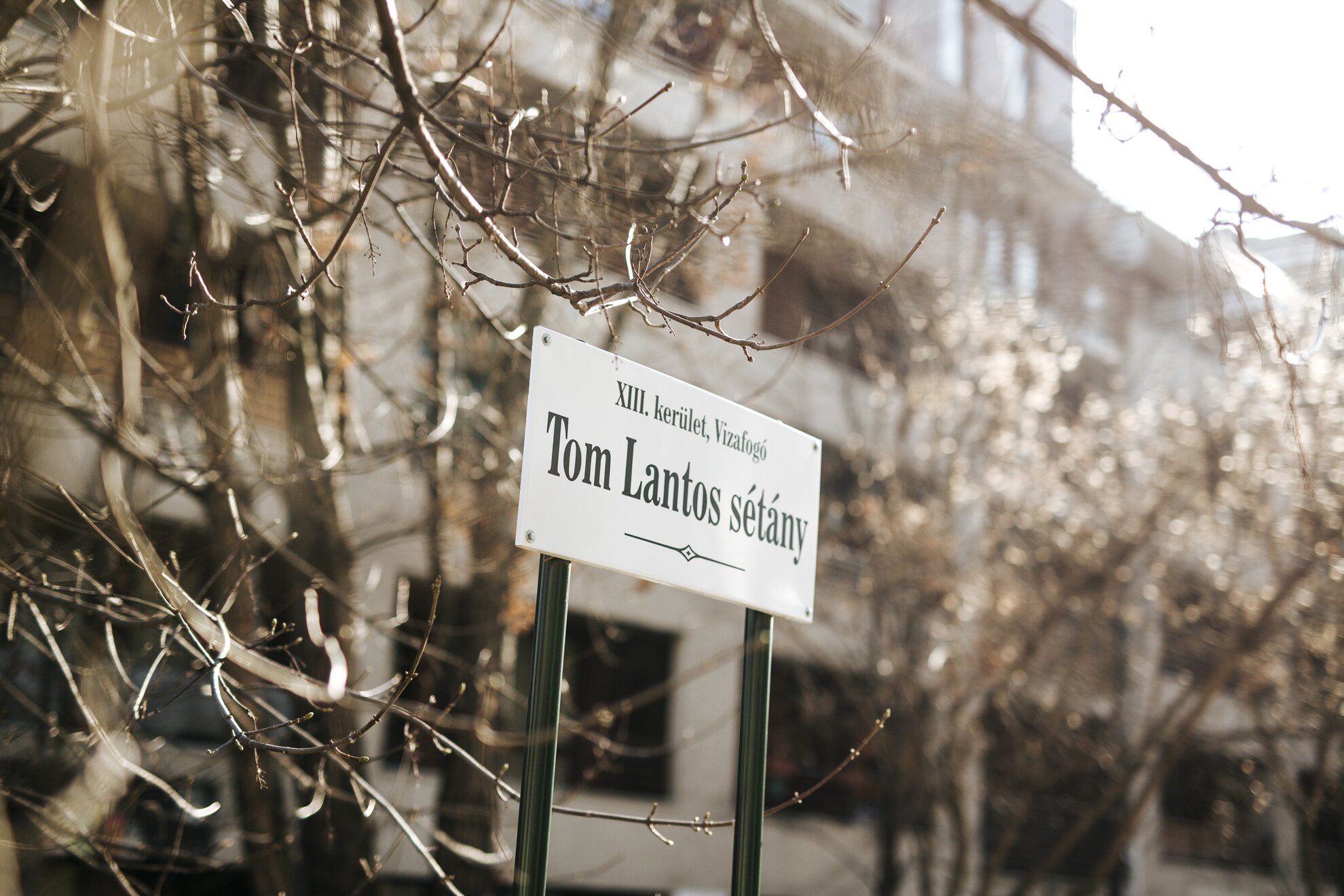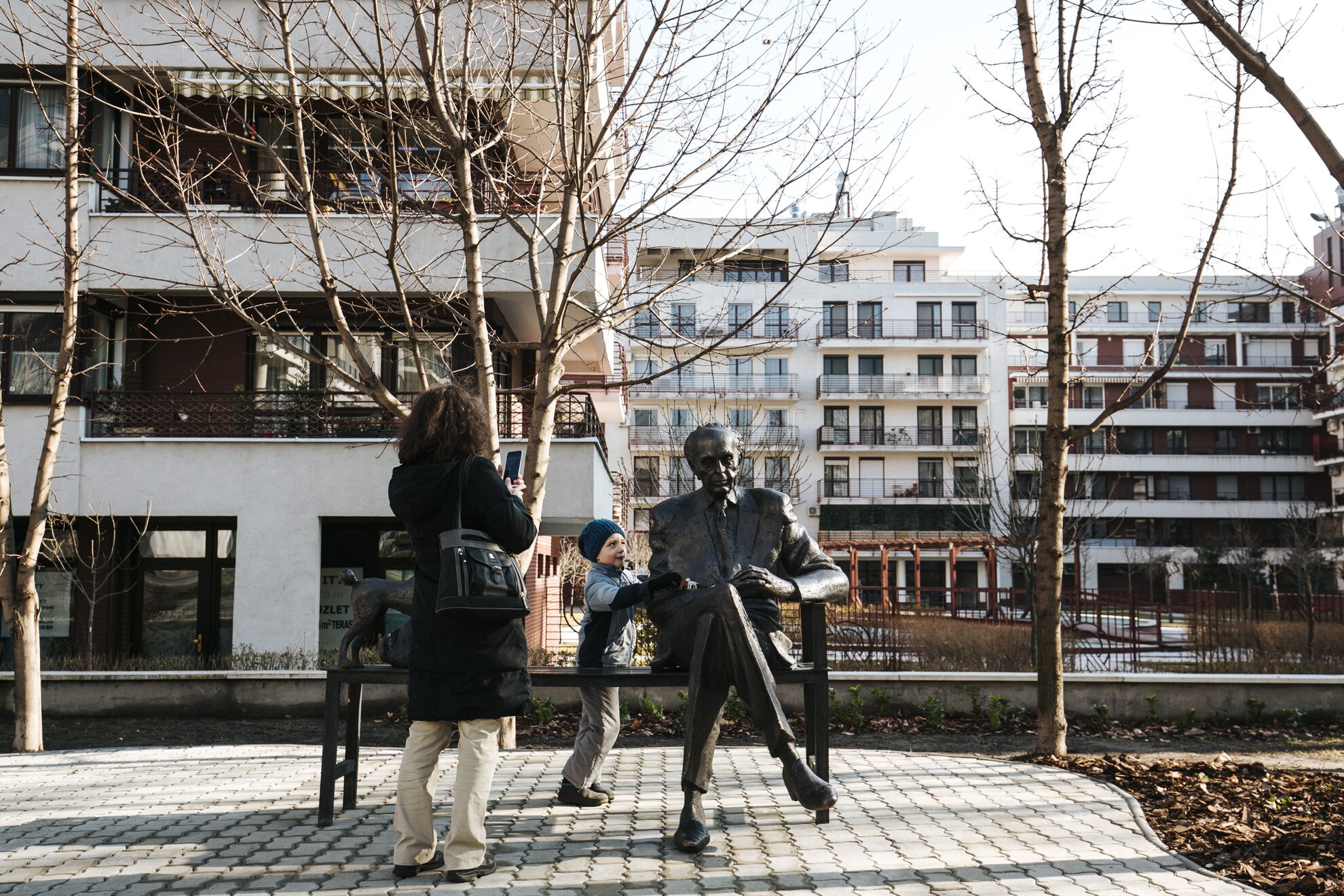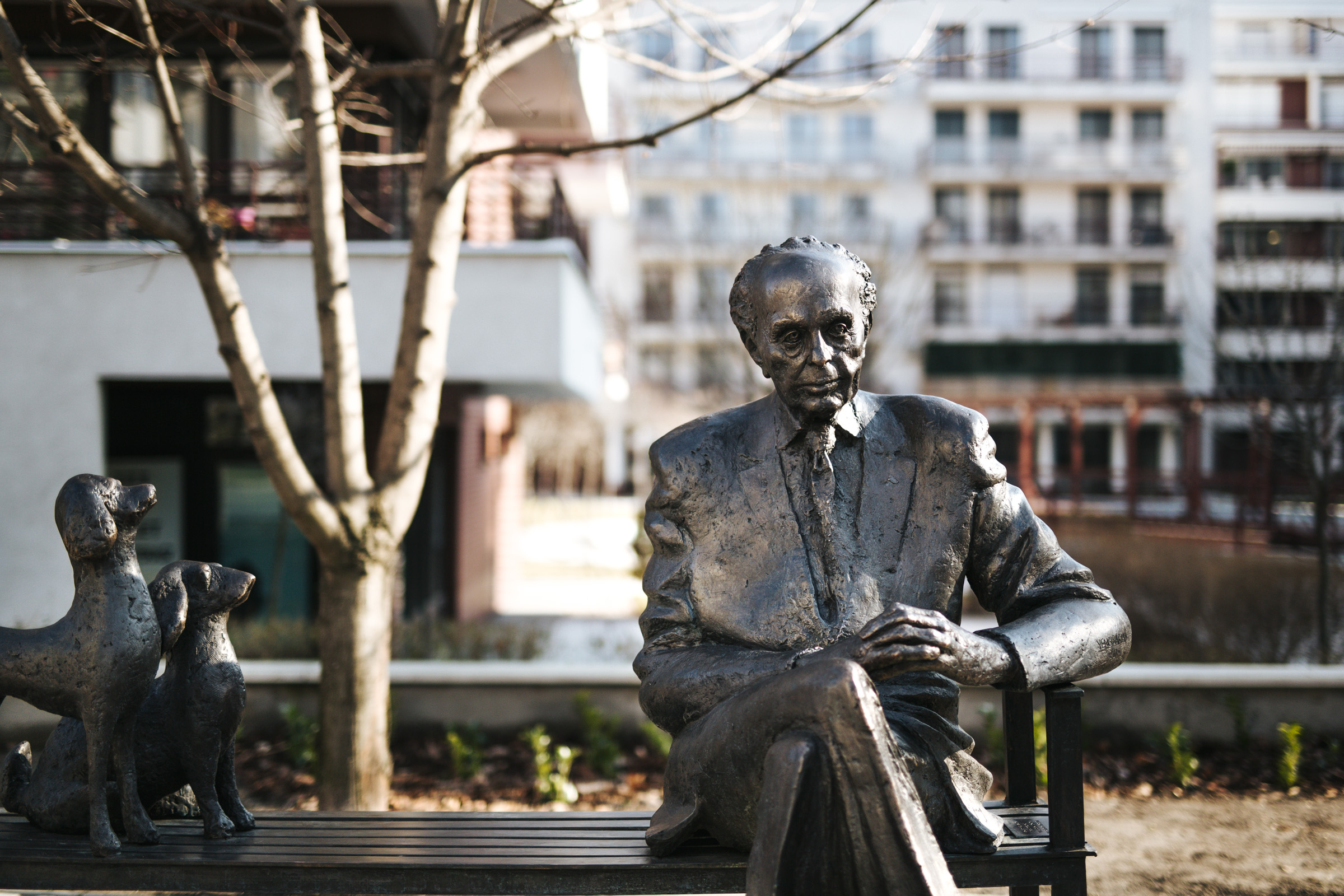Nestled in a leafy residential zone of District XIII, the new statue is appropriately sited on Tom Lantos Promenade, a walkway not far from where the California congressman went to high school. Here members of the Lantos family gathered with city officials and U.S. Chargé D’Affaires David J. Kostelancik for the sculpture’s official dedication ceremony on February 1st.

“I affirm the sentiments of former Vice President Biden: Tom Lantos was a true gentleman and statesman; passionate about his views, firm in his support of the democratic process, and always focused on the dignity of his fellow humans, no matter their political stripe,” said Kostelancik of the representative born in the Magyar metropolis as Tamás Péter Lantos on February 1st, 1928, who served in Washington D.C. from 1980 until his death in 2008.

Lantos only survived boyhood thanks to his incredible fortitude and indomitable spirit. Aged 16 when the Nazis took over Hungary, Lantos was arrested and sent to a labor camp along with fellow Jewish Hungarians, but he managed to escape; soon he was caught, beaten, and returned to the camp, but he escaped once more. After making his way back to Budapest, he took shelter in a safe house established by heroic Swedish diplomat Raoul Wallenberg – and since Lantos had fair hair and blue eyes, allowing him to circulate in public without drawing attention from fascist thugs, he often served as an underground courier to bring food and medicine to other hidden Jews.

After persisting through the Red Army’s Siege of Budapest and Hungary’s subsequent Soviet occupation, Lantos enrolled in the University of Budapest and earned a scholarship to study in the USA. He graduated with an economics Ph.D. at University of California, Berkeley in 1953 and settled into the San Francisco Bay Area for the rest of his life, working as a business consultant and TV commentator on foreign affairs before advising U.S. senators and beginning his extraordinarily successful 27 years in the House of Representatives – he never once lost a congressional election.

Lantos became the only Holocaust survivor in U.S. Congress, serving for decades as Chair of the House Foreign Affairs Committee and as a champion for human-rights causes worldwide. A Democrat and an influential member of the Congressional Progressive Caucus, Lantos advocated for reforms to the health-care system, reduction of national debt, strengthening gun-control laws, supporting same-sex marriage, increasing environmental protections, and legalizing marijuana for medicinal use.

Armenian-Americans especially revere Lantos for declaring that Turkey’s mass killings of Armenians during World War I was genocide – and an English-language plaque on Budapest’s new Lantos statue specifically thanks him for this. Not coincidentally, Budapest-based Armenian artist Mamikon Yengibarian created the bronze sculpture.

Otherwise, the new Lantos statue is understatedly reverent – dressed in a sharp suit and bearing a warm smile, this slightly oversized figure of the congressman sits on a bench alongside playful sculptures of his two favorite dogs, all amid tree-lined Tom Lantos Promenade next to parkland by the Danube. From the statue’s perspective, the century-old Margaret IslandWater Tower and distant Buda Hills are visible, surely a sight that Lantos admired as an innocent schoolboy. While young Lantos could have no idea of the hardships that he and his fellow Budapest residents would face back then, the story behind his memorial sculpture provides inspiration as we now yearn for new leaders with his moral courage and adamant commitment to democracy and human dignity.




